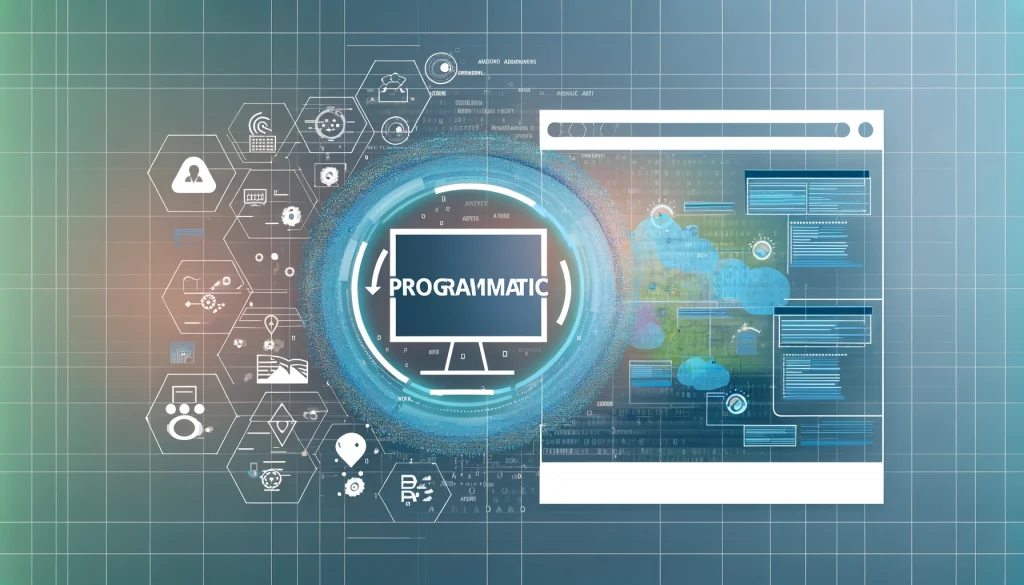As technology advances and consumer behaviours shift, the landscape of programmatic advertising continues to evolve. Marketers are increasingly directing substantial portions of their media budgets—up to 50%—toward programmatic methods. This shift reflects a broader trend that’s set to propel programmatic advertising to over $300 billion by 2026, according to Statista. As we delve into the latest techniques, it’s clear that innovations in automation, data analytics, and targeting are reshaping how businesses approach their advertising strategies, making it essential for marketers to stay ahead of these developments.
AI-Driven Optimization: Maximizing Efficiency and Performance
Artificial intelligence (AI) is revolutionizing programmatic advertising by enabling real-time optimization of bids and targeting. With AI-powered predictive analytics, marketers can dynamically adjust campaigns based on user behavior, historical performance, and even external factors like market trends. This not only improves the efficiency of ad spend but also ensures that ads are served to the most relevant audiences at the right time.
For example, a B2B tech company can use AI to target decision-makers in specific industries by analyzing their online behavior and engagement patterns. If the AI detects that a potential customer is researching similar products or services, it can automatically increase bids to ensure the ad is displayed prominently. This level of precision helps businesses maximize their ROI and drive higher conversion rates.
Contextual Targeting: Adapting to the Cookieless Future
As third-party cookies continue to phase out, contextual targeting is becoming a crucial strategy for reaching the right audience. Unlike traditional keyword targeting, contextual targeting aligns ads with the content on a webpage, ensuring relevance without relying on user data. This approach not only respects privacy but also enhances user experience by serving ads that complement the content they are already consuming.
For instance, a B2B marketing agency might place ads for its services on articles about digital transformation, ensuring that the ad appears in a context that resonates with potential clients. This strategy can increase engagement and brand awareness while maintaining compliance with privacy regulations.
Cross-Device Attribution: Understanding the Full Customer Journey
In today’s multi-device world, understanding the customer journey requires a holistic approach. Cross-device attribution allows marketers to track user interactions across different devices, providing a comprehensive view of how customers move through the sales funnel. This insight is critical for optimizing ad spend and tailoring messaging to different touchpoints.
Consider a B2B software company targeting executives who browse content on their smartphones but finalize purchases on desktop computers. Cross-device attribution enables the company to attribute conversions accurately, ensuring that marketing efforts are optimized across all devices. This not only improves targeting but also helps in allocating budgets more effectively.
First-Party Data: Building Trust and Personalization
With the decline of third-party data, first-party data has become a goldmine for marketers. By collecting data directly from customers, businesses can create more accurate audience segments and deliver personalized ad experiences. This data is often more reliable and privacy-compliant, as it is gathered with user consent.
For example, a B2B financial services provider can use first-party data from its email subscribers to create targeted campaigns. By analyzing past interactions and preferences, the provider can deliver personalized content that resonates with each segment, ultimately driving higher engagement and conversions.
Programmatic CTV and Audio: Expanding Reach on Diverse Platforms
As consumers continue to embrace connected TV (CTV) and audio streaming, programmatic advertising is expanding into these channels. Programmatic CTV and audio offer new opportunities to reach audiences on platforms like Hulu, Spotify, and podcasts, allowing businesses to diversify their media mix and engage users in new ways.
For instance, a B2B cybersecurity firm can run targeted ads on CTV platforms that reach IT decision-makers during their favorite shows or podcasts. This approach not only broadens the firm’s reach but also taps into the growing trend of consumers spending more time on non-traditional media channels.
Privacy-Focused Targeting: Navigating Data Regulations
With data privacy regulations like GDPR and CCPA reshaping the digital landscape, marketers must prioritize privacy-first practices in their programmatic strategies. Privacy-focused targeting methods, such as unified ID 2.0 and contextual targeting, help businesses comply with regulations while still delivering effective ads.
Unified ID 2.0, for example, allows marketers to target users across the web without relying on third-party cookies, providing a privacy-conscious solution that aligns with modern data standards. By adopting such technologies, businesses can maintain consumer trust and avoid potential regulatory pitfalls.
Advanced Audience Segmentation: Delivering Hyper-Targeted Campaigns
Audience segmentation has always been a cornerstone of effective advertising, but in 2024, it’s about to get even more sophisticated. By leveraging data on demographics, interests, behavior, and purchase intent, marketers can create highly detailed audience segments that allow for hyper-targeted campaigns.
For example, a B2B SaaS company can segment its audience based on industry, company size, and role within the organization. By tailoring messaging to each segment, the company can deliver more relevant ads that speak directly to the needs and pain points of its target customers. This level of personalization can significantly boost engagement and conversion rates.
Conclusion
Looking ahead, programmatic advertising is poised to advance even further, driven by innovations that promise to redefine digital marketing. With the integration of AI-powered optimization, enhanced contextual targeting, and sophisticated cross-device attribution, B2B marketers will have the tools to navigate the complexities of the digital landscape with greater precision. Embracing first-party data, programmatic CTV and audio, and privacy-centric approaches will not only bolster campaign effectiveness but also position businesses to capitalize on emerging opportunities.





